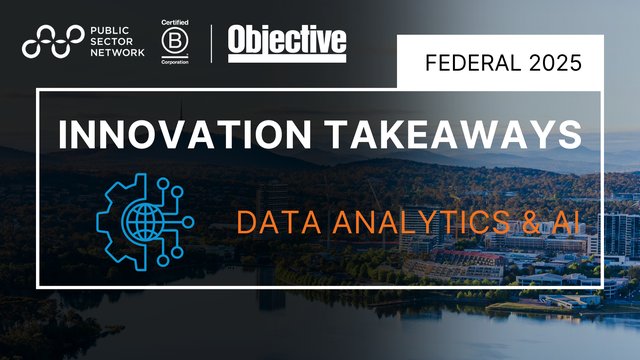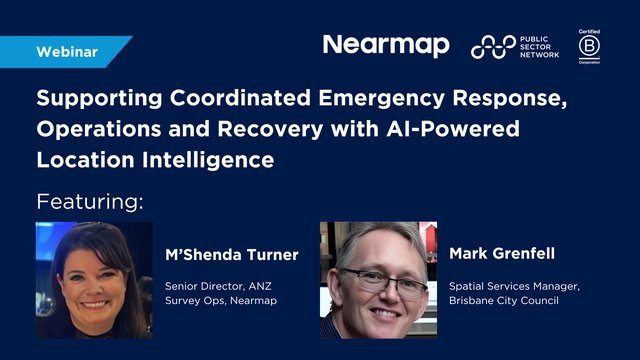Data is king in the technological economy, but before you can unlock its potential, you’ll need the right culture. To learn more about embedding a data-centric organisational culture read on below.
In the first part of our information management and data governance blog series we looked at why information management frameworks were integral in the public sector – you can check that post out here. But basically operating without a solid framework is risky – leaving your department open to cyber attacks and data misuse. A good framework however saves time, money and resources and ensures that you have a solid foundation on which to build out future Analytics and Automation initiatives.
In the second part of the series we look at how to build the right culture to effectively harness data for informed decision making.
—
Data has become an organisation’s most valuable asset, providing a strong foundation for decision making and citizen experience initiatives. But unlocking its true potential is more than just empowering leaders to make better decisions using insights extracted from data; it’s about embedding data science into the core layers of your organisational structure, and recalibrating the business around data. Ultimately, it’s what differentiates a data-centric organisation from a data-driven one.
Data is emerging as the new currency of the technological economy, but many, especially in the slow moving public domain – mired by deeply rooted processes and legacy systems, still haven’t fully realised big data’s potential. By driving a data-centric mindset into your department, you can greatly improve every area of your operations, from process efficiency to service delivery.
While not public sector specific, according to the “Insights Driven Business Playbook” by Forrester, data-driven businesses are “growing at an average of more than 30% annually and are on track to earn $1.8 trillion by 2021,” clearly illustrating the truly transformative power of well harnessed data.
Why though despite the prevalence of data and the substantial impact it can have on a company’s success, does it remain an untapped resource for many?
With any transformation program often the biggest obstacles aren’t technical; they’re cultural. When it comes to data-centricity it’s simple enough to describe how to inject data into a decision-making process. It is far harder though to make this normal, even automatic, for employees — a shift in mindset that presents a daunting challenge.
To help you overcome this we’re sharing our six top tips to help you create and sustain a culture with data at its core.
Tip #1 – Reduce Data Anxiety
Moving to data-centric processes can often be viewed by some employees as threatening because they don’t see how they will fit in to the new way of doing things. As Dataversity explains, before implementing any changes, make sure everyone in the organisation understands exactly why this change is being made and how the company hopes to benefit. Make sure everyone understands that while there will be changes, the company is going to provide appropriate training and support for everyone to ensure that they continue to be a valuable resource within the organisation.
Tip #2 – Start Your Data-Centric Culture at the Top
Your organisation must have executive-level sponsorship to foster a data-driven culture. The process of changing the culture is going to require massive transformations. There will be resistance and hurdles that buy-in from the executive team will help navigate much more smoothly than a grassroots effort. This top-down approach is the best because there are going to be silos within your organisation that might not see the value in the holistic effort of transforming to a data-driven culture.
Tip #3 – Destroy Operational Silos
Silos are groups/departments within an organisation that don’t share data/knowledge with other parts of the organisation limit effectiveness. How can you have a data-driven organisation, and culture, when you have parts of the organisation that don’t share and operate under the same processes as the rest of the organisation?
The most effective way to kill your silos is to leverage your executive sponsorship, but also to develop genuine relationships to understand their silo so that you can speak to the benefits of the change you are helping to drive.
Tip #4 – Democratise Data
As you break down your silos, you will uncover hidden data that no other parts of your organisation knew of. With a well-planned approach to data governance, you can start to share much of this information in a way that is accessible and easy to use by other parts of the organisation. Data from different systems/silos/departments, when combined, can create better insights.
Data can be considered an asset when its accuracy is trusted, its provenance is well established, and its security is ensured. As the team over at Digital Doughnut explain; ‘ensuring that data is readily available throughout the organisation is the mainstay of a data-centric culture. The goal of data democratisation is to give every employee access to the data they need to perform their duties more effectively and bolster customer intelligence activities.’
Tip #5 – Get Data Literate
To become more data driven, CIOs and their staff need to become more data hungry. Opening up your tools to broader data pools can provide more insights for your business.
Yet, simply having this information at your disposal is not enough to become more data-driven. There’s a reason that data science is one of the fastest growing fields in tech right now. Businesses need to create a glossary of metrics to track, that all members of an organisation can recognise.
Using a variety of tools, you may find that data will differ drastically among different sets, even if targeting the same users over the same period of time. Each API is different, which is why it’s critical that staff members are aware of these nuances to create more cohesive strategies that reflect the data being shared.
Tip #6 – Build Momentum with POC Initiatives
The easiest way to build a positive culture around something is to prove its effectiveness. As this article explains though, in data and analytics, promising ideas often greatly outnumber practical ones making proving success a building momentum a challenge.
A best practice approach looks at engineering proofs of concept where a core part of the concept is its viability in production. One good way is to start to build something that is industrial grade but trivially simple, and later ratchet up the level of sophistication. By beginning with low hanging fruit you gain momentum for, and build trust in, larger data analytics projects.
For more content, news and insights be sure to join the free Data & Analytics Community – a hub where you can connect with like-minded professionals, source thought provoking content, and engage in conversation with peers.




































